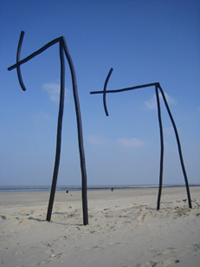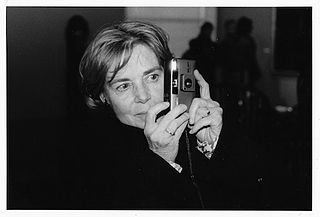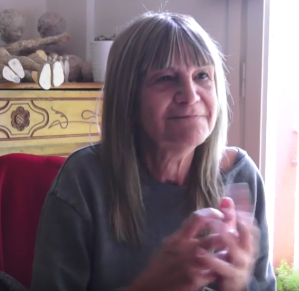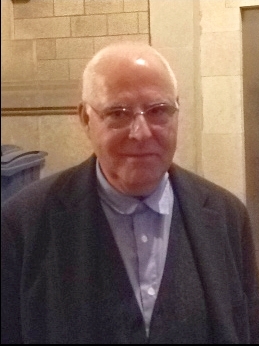
The Fundació Joan Miró is a museum of modern art honoring Joan Miró located on the hill called Montjuïc in Barcelona, Catalonia (Spain).

Antoni Taulé is a Spanish painter, architect, and performer. A street artist during the sixties, his art has been labelled as part of hyperrealism and a representative of the “new figurative” movement. He paints classical empty buildings and interiors: ballrooms, office receptions, halls of the Louvre museum, chambers of the Prado, the Palace of Versailles, monumental spaces that fuse reality and fiction under a fleeting atmosphere of light.
The building is actually just like a person. It has a heart, lungs, a nervous system, intestines, and eyes ... I am fascinated with what one can see, with the reason why does one look at it or avoid looking, and how one reflects upon what he sees. In one word my work is about how a man functions.

Albert Ràfols-Casamada was a Spanish painter, poet and art teacher involved in the vanguard movements of his time. He is considered one of the most important, multifaceted Catalan artists of his time. His artwork began in the post-expressionist, figurative sphere but soon developed into his own abstract style grounded in a poetic rendering of everyday reality.

Riera i Aragó was born in Barcelona, Spain in 1954. He studied at the Sant Jordi Fine Arts School, graduating in 1973. Throughout his career he has made sculptures, paintings, and graphical work. His work often depicts machines using recycled bronze and iron. He has had important solo and group exhibitions and is present in several museum collections. In addition, he has made large sculptures for public spaces.

Àngels Ribé is considered one of the most important Catalan conceptual artists of the 70s. With a strong international presence, she worked alongside such artists as Vito Acconci, Laurie Anderson, Gordon Matta-Clark, Lawrence Weiner, Hannah Wilke, Martha Wilson, Francesc Torres, and Krzysztof Wodiczko, among others.

The navigator's hope is a series of paintings made by Joan Miró between 1968 and 1973, half of which now belong to the permanent collection of the Fundació Joan Miró in Barcelona, thanks to a donation by Pilar Juncosa. The rest of the series are preserved in various private collections.
Gloria Moure is a Spanish art historian, critic, curator and editor. She lives in Barcelona.

Alfons Borrell i Palazón was a Spanish abstract painter.
Albert Girós is a Catalan artist.

Antoni Abad i Roses is a Spanish artist. He began his career as a sculptor, and evolved over time towards video art and later in net.art and other forms of new media.
Abigail Lazkoz is a Spanish artist.
Ana Laura Aláez is a Basque artist. She is one of the most renowned contemporary artists in Spain. She defines herself as an "emotions architect", as she transforms all her life into art, depicting her feelings in her artworks. One of her first exhibitions took place in 1992, in Fundació Joan Miró's Espai 10, in Barcelona. Alberto Peral, another Basque artist, was also featured in this exhibition.
Gino Rubert is a Spanish artist. He lives and works in Barcelona, Berlin and Cuernavaca (Mexico). Rubert has worked in the media of painting, video and installation art.

Maria Lluïsa Borràs i González, doctorate in Art History from the Universitat de Barcelona, was a Spanish writer, critic, exhibition curator and specialist in the avant-garde and Dadaism.
Carles Delclaux Is is a textile artist trained in the Aymat factory and in the Massana School of Fine Arts in Barcelona.

Jesús Carles de Vilallonga i Rosell was a Spanish/Canadian figurative artist who worked primarily in the medium of egg tempera. He is best known for his richly textured paintings in an intricate, highly colored style that is not easy even though everything is readily intelligible: male and females characters, beasts, forests, architectural structures and artifacts. Vilallonga's iconography draws from a broad and complex painting tradition ranging from Romanesque art, the Renaissance, and Surrealism, while maintaining his own contemporary style. His work is sometimes related to Symbolism and his production is always enhanced by the contributions of abstraction. He works with the "inner eye" which Freud described as the most profound and the most intelligent, in a sojourn through nature and man's hidden interior.

Anna Manel·la or Anna Manel·la i Llinàs was a Spanish and Catalan sculptor and painter. She was known for her figures representing lost childhood. In 2022, the Museu de la Garrotxa devoted a monographic exhibition to her work: "If I could. Anna Manel·la (1950-2019)." Also in 2022, a group of friends published the book Anna Manel·la. La dona i el mur, which is a compilation of texts discussing the artist's life and works.

Antoni Llena is a Spanish artist.
Francesc Abad is a Spanish artist known for conceptual art, body art, and land art.
Rosa Maria Malet i Ybern is an art historian who directed the Fundació Joan Miró in Barcelona from 1980 until she retired in 2017.













